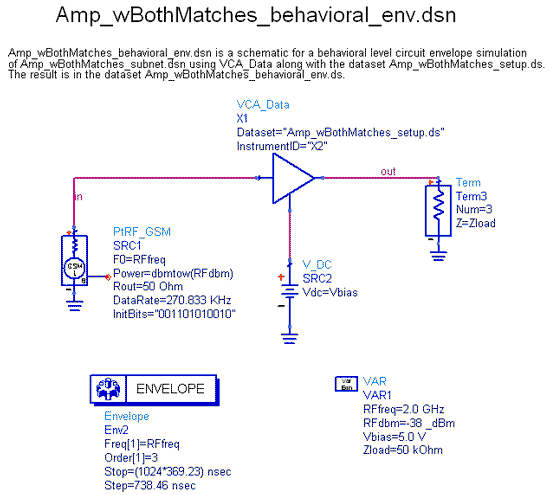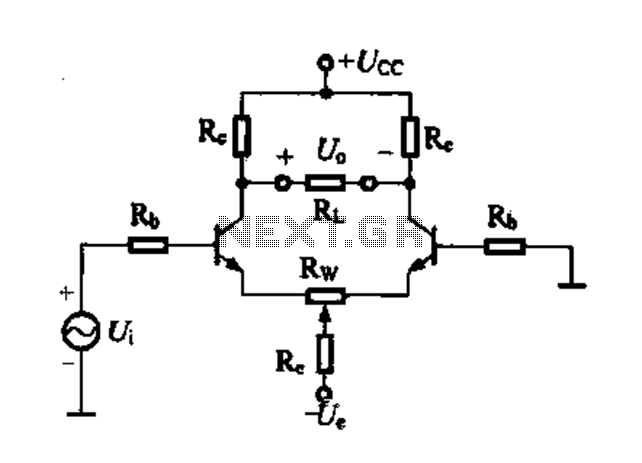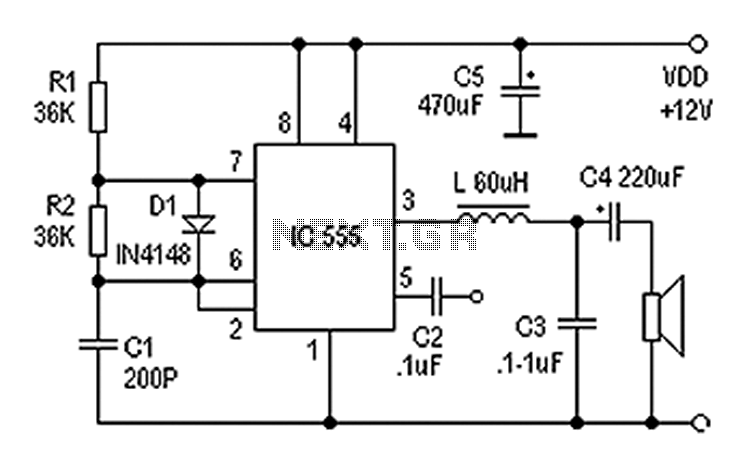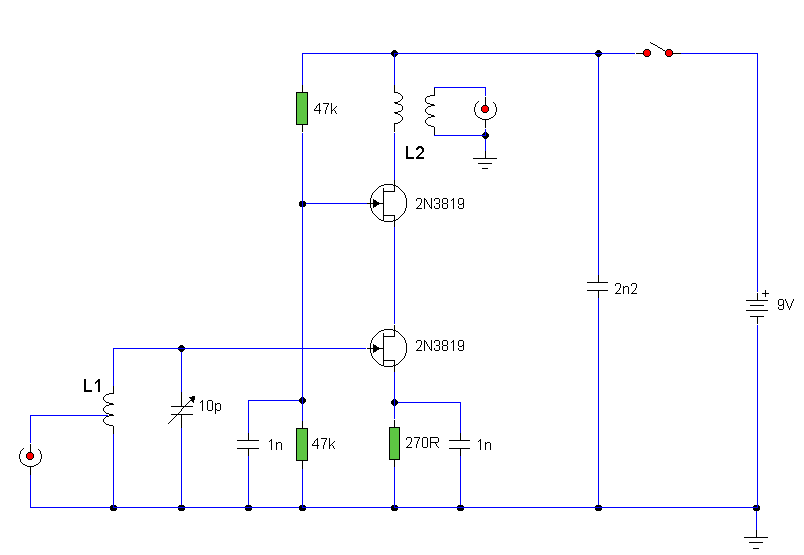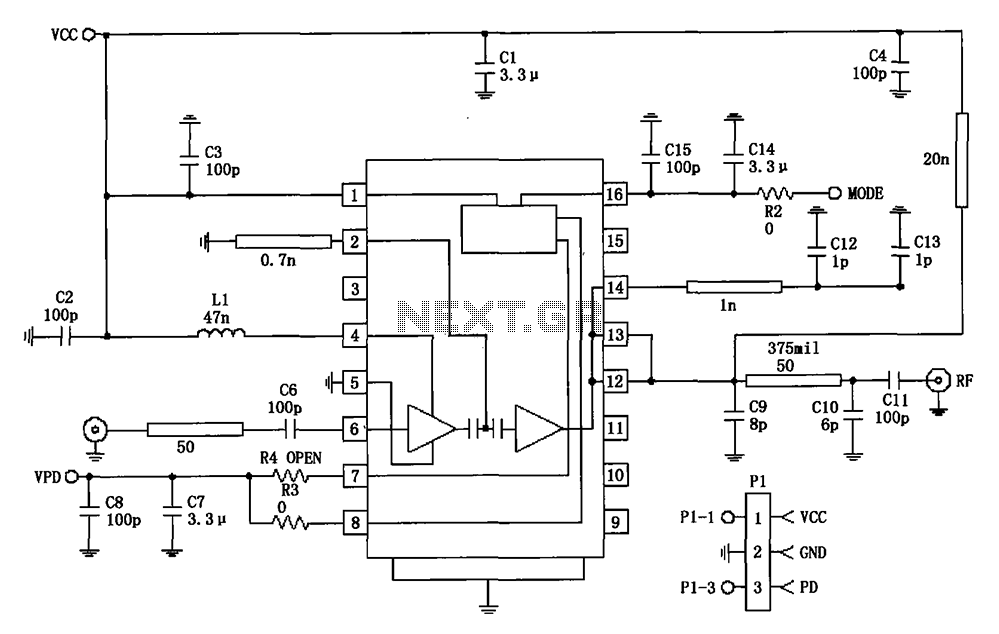
zn415 am radio with tda2822m amplifier
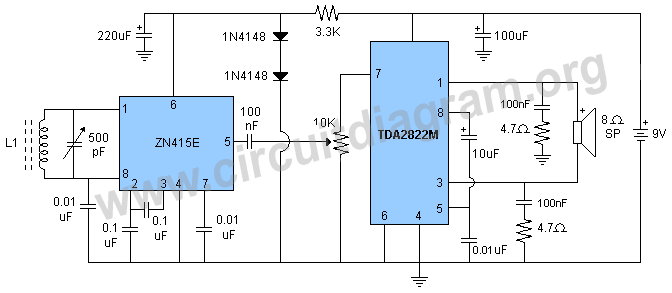
The RF detector circuit, RF amplifier circuit, and automatic gain control circuit (AGC) are integrated within the IC, allowing for the straightforward construction of a high-quality and sensitive AM receiver using this IC. The ZN415E IC is an advanced version of the ZN414 IC, with similar internal circuitry and sensitivity. The primary distinction between the two is the audio output; the upgraded ZN415E features an 18 dB buffer stage that enhances the audio output, enabling it to drive headphones and small speakers directly. Although the ZN41x series ICs have been discontinued by the manufacturer for several years, they may still be found in old stock at local electronic stores or online. Similar alternatives to the ZN414 IC include the MK484 and TA7642, which offer comparable performance. For further details, refer to the Radio & RF Circuits Section. Coil L1 consists of 55 turns of 0.315 mm (30 SWG) enameled copper wire wound on a 10 mm x 100 mm long ferrite rod. Other AM radio coils from scrap can also be utilized.
The ZN415E integrated circuit (IC) serves as a versatile component in the design of AM radio receivers, providing essential functionalities such as RF detection, amplification, and automatic gain control (AGC) within a single package. This integration simplifies the design process, allowing engineers and hobbyists to produce sensitive and high-quality receivers without the need for extensive external circuitry.
The ZN415E represents an enhancement over its predecessor, the ZN414, primarily through its improved audio output capabilities. The inclusion of an 18 dB buffer stage in the ZN415E allows it to drive headphones and small speakers directly, making it particularly suitable for portable applications where space and power efficiency are critical.
Despite the discontinuation of the ZN41x series by the manufacturer, these ICs remain accessible through various electronic supply channels, ensuring that enthusiasts can still leverage their capabilities in new projects. The existence of alternative ICs, such as the MK484 and TA7642, provides additional options for designers seeking similar performance characteristics in AM receiver applications.
The design of the coil L1 is a crucial aspect of the receiver's performance, as it influences the tuning and sensitivity of the circuit. The specification of 55 turns of 0.315 mm (30 SWG) enameled copper wire on a ferrite rod measuring 10 mm x 100 mm is optimized for AM radio frequencies. However, flexibility in coil design is encouraged, as other AM radio coils can be repurposed from available materials, potentially enhancing the performance of the receiver based on individual project requirements.
In summary, the ZN415E IC and its associated components provide a robust foundation for building AM radio receivers, combining advanced features with ease of use, and maintaining compatibility with existing electronic components.RF detector circuit, RF amplifier circuit, auto gain control circuit (AGC) etc is already built inside the IC due to which you can easily build a high quality and sensitive am receiver using this IC. The ZN415E IC is an advance version of ZN414 IC, the internal circuit and sensitivity of both the ICs are almost same.
The only difference between t he two is the audio output. The upgraded version ZN415E contains an 18 DB buffer stage to increase the audio output to drive headphones and small speakers directly. Although the ICs of ZN41x series has been discontinued by the manufacturer few years back but you can still found them in old stocks at your local electronic stores or online.
There are also other similar versions of ZN414 IC are available like MK484, TA7642 with similar performance. For more details see: Radio & RF Circuits Section. Coil L1: The Coil L1 is equal to 55 turns of 0. 315mm (30 swg) enameled copper wire wound on 10mm x 100mm long ferrite rod. You can also try other AM radio coils you have in scrap. 🔗 External reference
The ZN415E integrated circuit (IC) serves as a versatile component in the design of AM radio receivers, providing essential functionalities such as RF detection, amplification, and automatic gain control (AGC) within a single package. This integration simplifies the design process, allowing engineers and hobbyists to produce sensitive and high-quality receivers without the need for extensive external circuitry.
The ZN415E represents an enhancement over its predecessor, the ZN414, primarily through its improved audio output capabilities. The inclusion of an 18 dB buffer stage in the ZN415E allows it to drive headphones and small speakers directly, making it particularly suitable for portable applications where space and power efficiency are critical.
Despite the discontinuation of the ZN41x series by the manufacturer, these ICs remain accessible through various electronic supply channels, ensuring that enthusiasts can still leverage their capabilities in new projects. The existence of alternative ICs, such as the MK484 and TA7642, provides additional options for designers seeking similar performance characteristics in AM receiver applications.
The design of the coil L1 is a crucial aspect of the receiver's performance, as it influences the tuning and sensitivity of the circuit. The specification of 55 turns of 0.315 mm (30 SWG) enameled copper wire on a ferrite rod measuring 10 mm x 100 mm is optimized for AM radio frequencies. However, flexibility in coil design is encouraged, as other AM radio coils can be repurposed from available materials, potentially enhancing the performance of the receiver based on individual project requirements.
In summary, the ZN415E IC and its associated components provide a robust foundation for building AM radio receivers, combining advanced features with ease of use, and maintaining compatibility with existing electronic components.RF detector circuit, RF amplifier circuit, auto gain control circuit (AGC) etc is already built inside the IC due to which you can easily build a high quality and sensitive am receiver using this IC. The ZN415E IC is an advance version of ZN414 IC, the internal circuit and sensitivity of both the ICs are almost same.
The only difference between t he two is the audio output. The upgraded version ZN415E contains an 18 DB buffer stage to increase the audio output to drive headphones and small speakers directly. Although the ICs of ZN41x series has been discontinued by the manufacturer few years back but you can still found them in old stocks at your local electronic stores or online.
There are also other similar versions of ZN414 IC are available like MK484, TA7642 with similar performance. For more details see: Radio & RF Circuits Section. Coil L1: The Coil L1 is equal to 55 turns of 0. 315mm (30 swg) enameled copper wire wound on 10mm x 100mm long ferrite rod. You can also try other AM radio coils you have in scrap. 🔗 External reference
